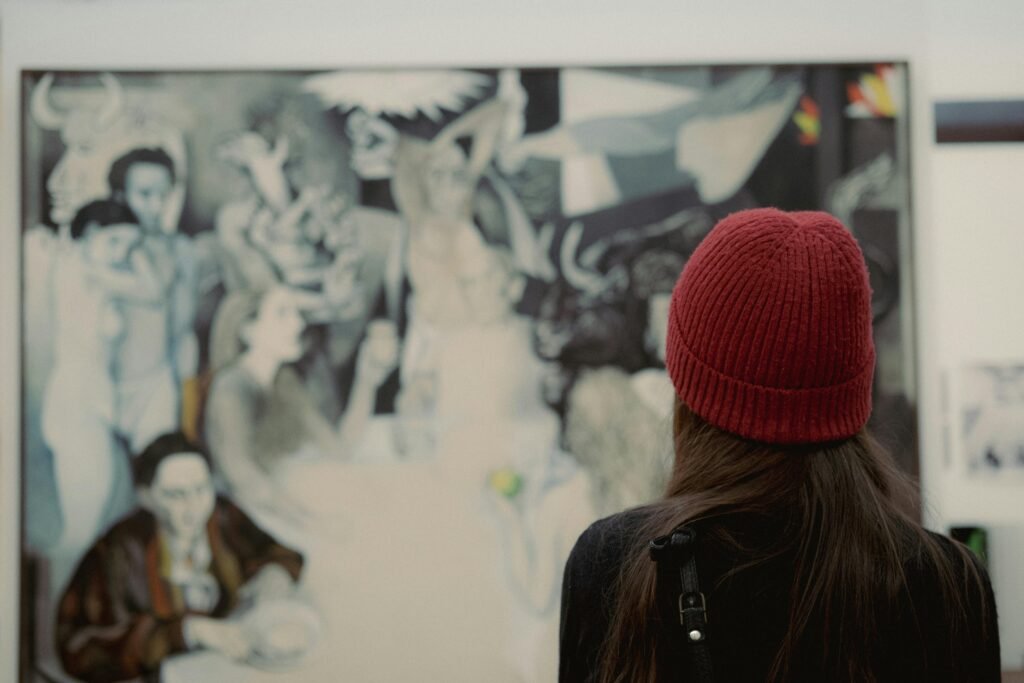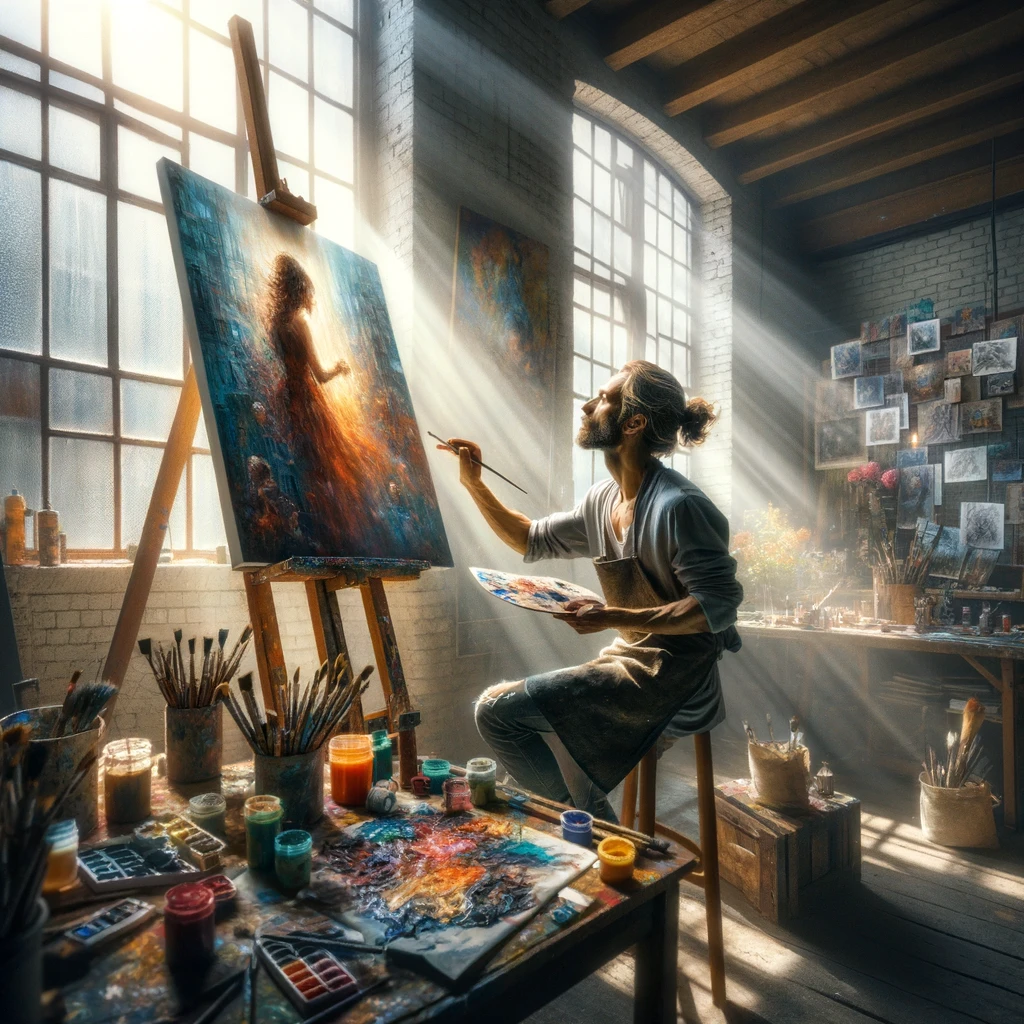Exploring Printmaking: Techniques Like Block Printing, Screen Printing, and Etching
Introduction to Printmaking Printmaking is a diverse and multifaceted art form that has played a significant role in the history of visual expression. It encompasses a variety of techniques that allow artists to produce multiple copies of their artwork, making it distinct from traditional painting or drawing, which typically results in a unique piece. Historically, printmaking dates back to ancient civilizations, with evidence of its practice found in early Chinese woodblock printing and Japanese ukiyo-e, which laid the groundwork for what would evolve into a prominent artistic medium. The process of printmaking involves transferring images or designs from a matrix onto another surface, commonly paper or fabric. Various methodologies such as relief, intaglio, lithography, and screen printing serve as the cornerstones of printmaking techniques, each offering unique results and characteristics. Relief printing, for instance, involves carving into a material, while intaglio entails engraving or etching designs into a surface. Lithography, on the other hand, employs chemical processes to produce images, while screen printing uses stencils to create vibrant designs. Printmaking is more than just a technical skill; it is an essential medium that allows artists to explore concepts of reproduction and variation. It challenges the notion of originality, inviting discussions on authenticity and the value of multiples. Moreover, as modern times have progressed, printmaking has continued to adapt and thrive amidst the digital revolution, blending traditional methods with contemporary practices. Today, artists harness the versatility of printmaking to convey complex ideas and engage audiences in innovative ways, ensuring its relevance in the current art landscape. As we delve deeper into specific techniques, it is important to appreciate the historical context and the artistic potential that printmaking offers. Block Printing: The Timeless Technique Block printing is a traditional and esteemed printmaking technique that dates back centuries, characterized by its direct and tactile process. At its core, block printing involves carving an image or design into a block, typically made of wood or linoleum, which is then inked and pressed onto paper or fabric to produce the final print. The artistry lies in the creation of the block itself, where the artist meticulously plans and carves the design, with the raised areas representing the parts that will transfer ink during the printing process. The tools essential to block printing include a variety of chisels, knives, and gouges used for carving. Artists often begin by sketching their design onto the block’s surface before executing the carving. The choice of material—whether wood, linoleum, or even rubber—affects the texture and quality of the print. Each material offers unique qualities: wood can yield intricate details, while linoleum is more forgiving, allowing for cleaner cuts and bold results. During execution, the carved block is coated with ink, often using a brayer, a tool designed for distributing ink evenly across the block. Pressing the block against the chosen substrate transfers the image, making precision critical. This method yields distinctive stylistic variations; from detailed and delicate prints to bold and graphic representations, artists can explore and develop their unique styles within block printing. The advantages of block printing include its ability to produce multiple copies of the same design, while still retaining a hand-crafted quality that appeals to collectors and art enthusiasts alike. Notable artists who have significantly contributed to the popularity of block printing include Katsushika Hokusai, known for his iconic woodblock prints, and contemporary artists like Angie Lewin, who have modernized the technique while still respecting its rich history. As such, block printing remains a vital and dynamic form of artistic expression. Screen Printing: Modern and Versatile Screen printing, also known as silkscreen printing, is a widely embraced technique characterized by its modern versatility and adaptability across both commercial and fine art domains. This method involves creating a stencil, or screen, that allows ink to pass through and reach the substrate beneath, which can be anything from fabric to paper. The fundamental materials required for screen printing include screens, specialty inks, squeegees, and a substrate to print on, making it an accessible option for artists and manufacturers alike. The screen printing process begins with the creation of a screen, usually made from a fine mesh fabric stretched over a frame. This screen is coated with a light-sensitive emulsion, which is then exposed to light to create the desired design. After exposure, the screen is washed out to reveal the areas where ink will pass through, solidifying its role as both a stencil and a conveyor for artistic expression. Once the screen is prepared, the artist places it over the substrate, pours ink onto the screen, and uses a squeegee to push the ink through the mesh, effectively transferring the design onto the substrate below. One of the defining characteristics of screen printing is its broad range of applications. This technique has gained popularity for producing everything from custom t-shirts to high-end art prints. Renowned artists, such as Andy Warhol and street artists like Shepard Fairey, have embraced screen printing to create memorable works, demonstrating its ability to blend commercial and fine art beautifully. Furthermore, with advancements in technology, digital screen printing has emerged, allowing for greater precision and complexity in design execution. By adapting to various styles and themes, screen printing continues to thrive as a prominent printing technique in contemporary artistic practices. Etching: The Intricate Art of Engraving Etching is an esteemed printmaking technique that has captivated artists for centuries. This method employs acid to incise images onto metal plates, creating intricate designs that can be reproduced with precision. The process begins by preparing a metal plate, usually made of copper, zinc, or steel. The artist cleans the surface thoroughly to ensure that it is free from impurities that could affect the quality of the final print. Next, a thin layer of acid-resistant wax, known as ground, is applied to the plate. This ground protects specific areas of the plate from the acid, allowing the artist to draw directly onto the surface with a pointed tool. Once the design has been etched into the ground,





